10 top tips on wing foiling
As anyone who’s ever plunged into a Cumbrian lake knows, even on the balmiest of days, the Lake District feels a long way from Hawaii. But when a hot trend like wing foiling blows our way from across the Pacific, we’re keen to know more.
While it might be less than six years old, this Maui-born activity has taken the watersports world by storm. Using an inflatable wing and a modified SUP board, wing foiling is a cross between windsurfing, kitesurfing, and paddleboarding – and with top speeds over 40mph, it’s just about the fastest way to get out on the water.
We caught up with Another Place’s resident paddle sports instructor, Adrian Bacon, to give us the wing foiling lowdown – and ask why he thinks it’ll be the next big thing on Ullswater.
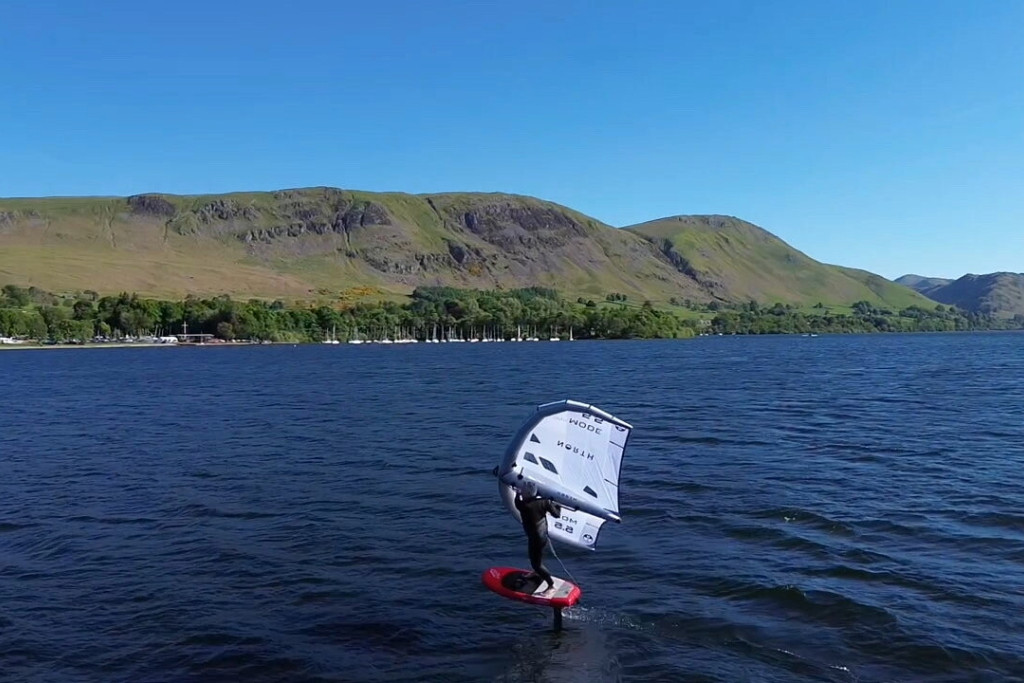
1. It's the closest thing to flying on water
“Wing foiling is very different to most other watersports, as you’re riding about a metre above the surface of the water, rather than gliding on top of it, so it feels incredibly fast, smooth and quiet. It’s an amazing sensation that feels like you’re flying across the water. It’s massively addictive and huge fun. I’ve been windsurfing for more than three decades, but I’m hooked.”
2. Wing foiling was invented in Hawaii by accident
“Maui has been a centre for watersports for ages. Many of the top windsurfing and kitesurfing manufacturers are based there, along with their pro riders. Back in 2019, the legendary US windsurfer Ken Winner (winner of multiple windsurfing world titles) was playing around with an inflatable wing, which is basically like a big handheld kite that’s been pumped up with air. That gives you speed. He paired it with a hydrofoil SUP board, which has a big fin on the bottom. That creates lift. Without knowing it at the time, Ken had just invented a completely new sport. It’s taken off in a huge way.”
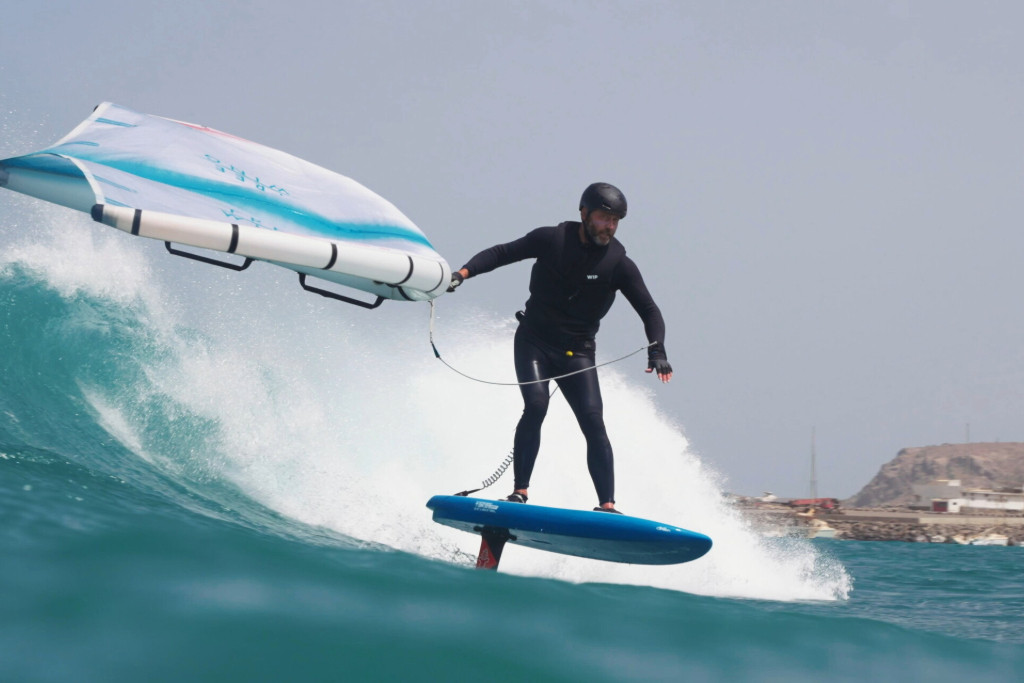
3. It uses the same science as an aeroplane taking off
“The inflatable hand wing uses the power of the wind to give you forward drive, similar to windsurfing. But once you’ve reached enough speed on the surface, the hydrofoil starts to create lift, similar to an aeroplane wing, enabling the board – and the rider – to rise up off the water. There’s no other watersport that gives quite the same experience.”
4. You get to break the Ullswater speed limit (legally)
“Officially there’s a 10mph speed limit on Ullswater for motorboats and powered craft, but the average intermediate wing foiler will cruise around at speeds of around 20mph – twice the official speed limit. That might not sound all that fast, but the sensation of speed is probably the equivalent of 40mph on a push bike. The world record is 48mph and the highest jump is 15m.”
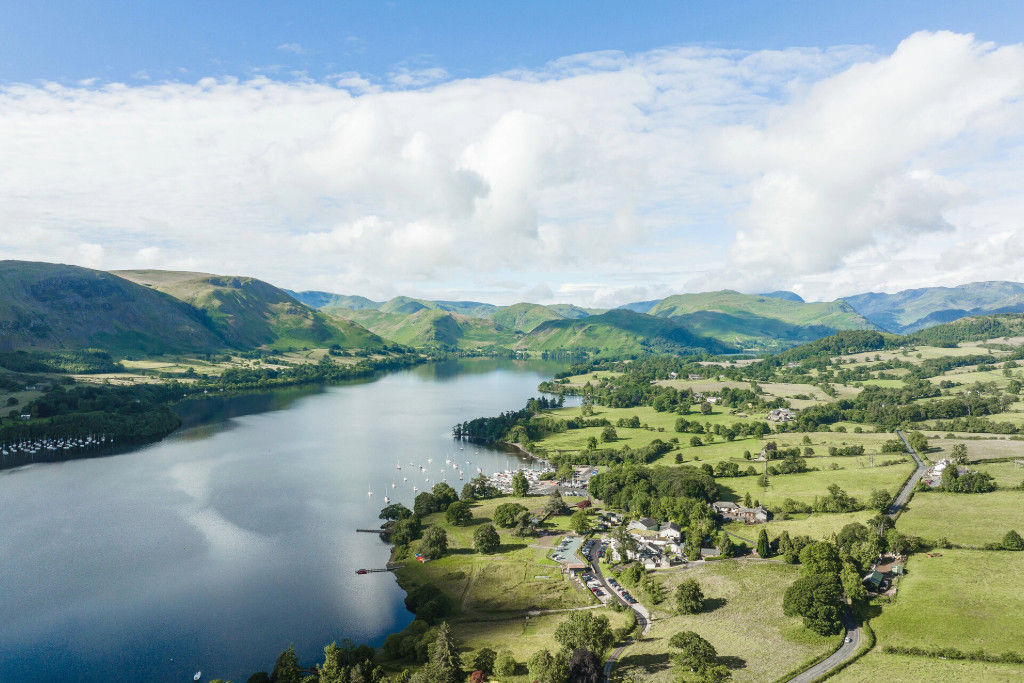
5. It’s super quiet
“Since the only part of the board that’s in contact with the water is the foil, it’s much quieter than other watersports. On the right day, in the right conditions, you almost forget the board is there.”
6. Ullswater is one of the best places to wing foil in the UK
“Due to the lake’s length (seven miles) and southwesterly orientation, Ullswater gets consistent winds which funnel down the lake and are perfect for windsports. From the private beaches at Another Place you have easy access, too. But for me, it’s the scenery that makes it: the stunning mountains on all sides make it extra special.”
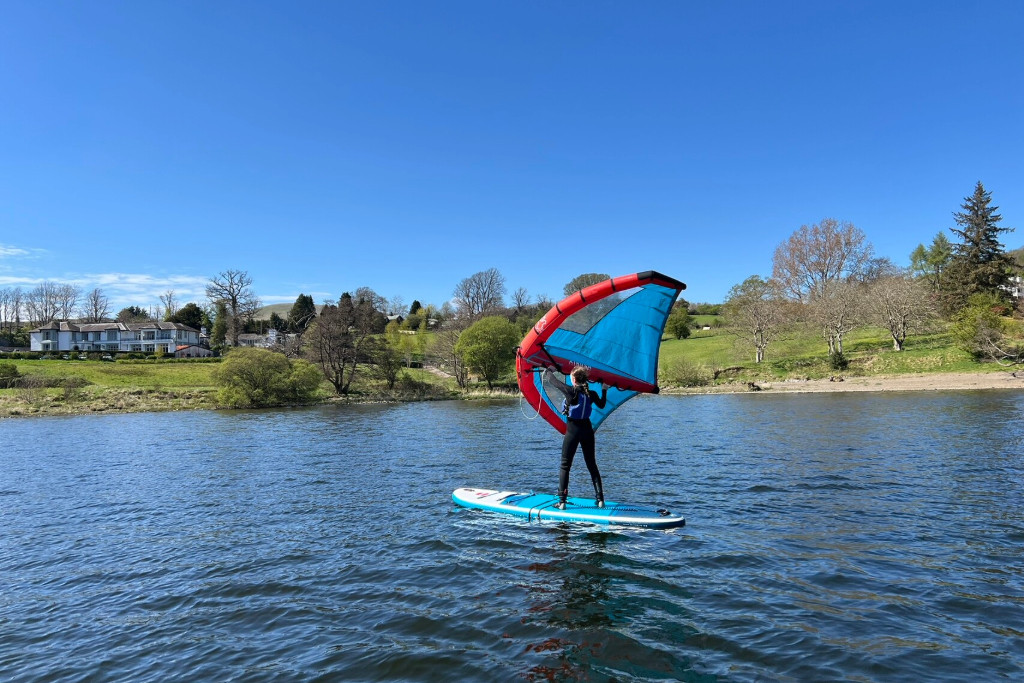
7. It helps if you’ve paddleboarded or windsurfed before, but it’s not essential.
“Wingfoiling uses similar skills to many other watersports, but it’s a lot less strenuous than windsurfing, and a lot more accessible than kitesurfing. The best way to start is by a few sessions of wing surfing. This basically uses the wing foil sail, but on a more stable, standard SUP board. Once you’ve learned the basic skills on that, you can move up to the next level pretty quickly. We normally recommend two or three sessions – about four to six hours – of wing surfing before progressing up to the hydrofoil board.”
8. You don’t need perfect conditions.
“The equipment is so efficient that you can have amazing fun in pretty average conditions. To start with you will want flat water and moderate winds, but as you gain experience and ability, you’re able to handle more extreme conditions. We can cater to different ability levels by using different size boards and wings. Generally, the better you are, the smaller the board you use. The best thing about wing foiling is the amount of time you get on the water.”
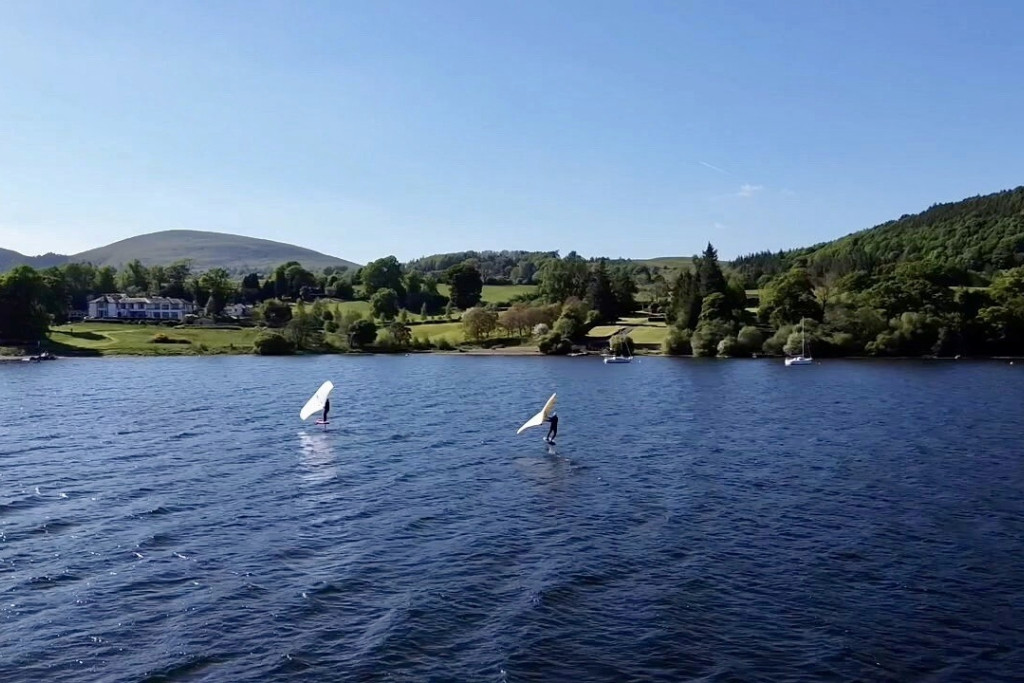
9. You need to use the right gear
“The wing foil and the hydrofoil board are the two essential items. You should also always wear a protection helmet and impact vest as you’re travelling at speed. Many riders wear wetsuits, but not all do.”
10. It’s one of the fastest-growing watersports in the UK
“There are wing foiling groups springing up all over the place at the moment – just join your local wing foil Whatsapp group to connect with other riders in the area. It’s a good idea to get initial lessons from an experienced, RYA-qualified wing foiling coach, but once you know the basics, you can head out on your own. Second-hand equipment can be picked up fairly easily.”
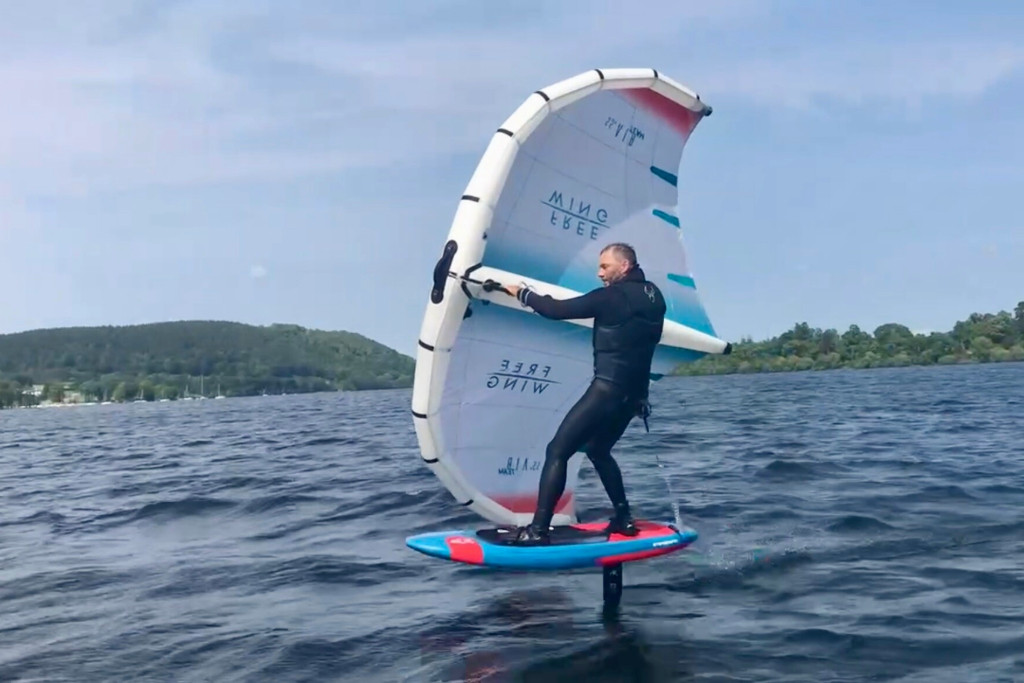
Want to try wing foiling for yourself? Another Place offers two RYA–approved lessons with qualified instructors. All equipment is provided including wetsuits, buoyancy aids and helmets. Lessons are suitable for ages 18+, or 13+ when accompanied by an adult.
Our two-hour Introduction to Wing Surfing session is ideal for beginners. It’s been designed for people with no previous wing surfing or wing foiling experience. It teaches the basics of safely handling a wing on a SUP/windsurf board, including equipment setup, self-rescue and techniques including turns and power development. Max four people per session.
For more advanced riders, our intensive two-hour Wing Foiling Course is designed for wing surfing graduates ready to progress to the foil. The lesson covers the extra challenges of handling the hydrofoil board, including launch, landing and how to fail safely. By the end of the session, you’ll be launching on your first solo wing foil flight!